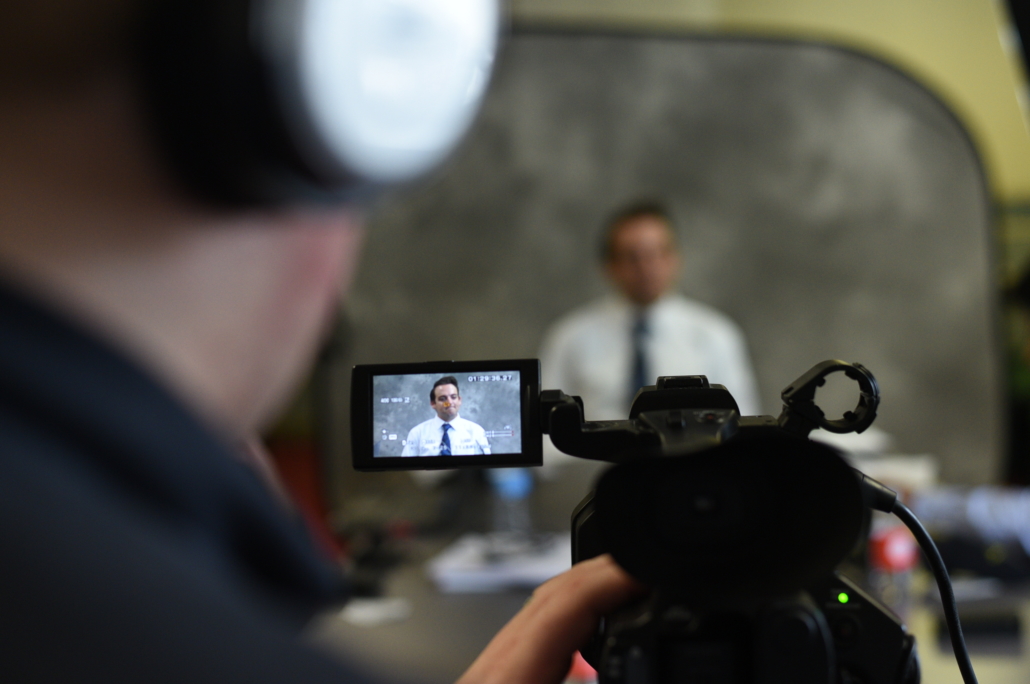Looking Into the Systems of Lawful Videography: Introduction Its Operation in Shielding Genuine Aesthetic Testament for Judicial Proceedings
In the realm of judicial process, the role of legal videography stands as a cornerstone in maintaining and presenting aesthetic proof. As innovation remains to advancement, the systems behind legal videography have come to be increasingly elaborate, offering a vital layer of credibility to statements caught on video. By diving into the functional complexities of lawful videography, one can reveal the meticulous processes that secure the integrity of aesthetic evidence offered in courtrooms - Legal Videography. This exploration not just drops light on the historical evolution of lawful videography yet likewise means the future fads that might additionally change exactly how aesthetic testimonies are upheld in the world of justice.
Historic Development of Legal Videography
Taking a look at the historic progression of legal videography reveals a significant transformation in the recording and discussion of aesthetic proof within the lawful landscape. In the past, legal procedures greatly depended on created records and pictures to record events and offer proof. With the arrival of video clip modern technology, the legal sector witnessed a paradigm change in just how aesthetic testament was recorded and presented.
The development of lawful videography can be mapped back to the late 20th century when innovations in video recording devices made it much more obtainable for use in courts. This technical innovation not only improved the precision and integrity of visual evidence yet also changed the way instances existed to discretionary (Legal Videography). Attorneys began to recognize the convincing power of video recordings in conveying emotions, nuances, and non-verbal hints that created transcripts or pictures alone can not catch properly

Technology Advancements in Video Clip Paperwork
What crucial technical improvements have revolutionized video documents in the lawful area? The legal area has seen considerable developments in video documentation innovation that have enhanced the credibility and integrity of aesthetic proof in judicial procedures. One of the vital innovations is high-definition (HD) video recording capabilities, which provide crystal-clear photos and sharp details that are important for precisely capturing testaments, faces, and various other visual signs. Furthermore, the integration of timestamping and metadata features in video clip paperwork tools has actually allowed accurate paperwork of when and where the video was videotaped, making certain the stability of the evidence offered in court.
In addition, improvements in video clip security and watermarking innovations have actually bolstered the protection and tamper-proof nature of video proof, protecting it versus unapproved alterations or meddling. The development of cloud storage space services and remote accessibility capabilities has streamlined the storage, retrieval, and sharing of video proof, promoting smooth collaboration among legal experts and making certain reliable accessibility to crucial aesthetic testaments when required. These technical innovations in video clip documentation have actually certainly reinvented the legal field, improving the precision, integrity, and admissibility of aesthetic evidence in judicial procedures.
Function of Legal Videographers in Courtroom Setups
The evolution of video clip documents innovation in the lawful area has actually necessitated an essential role for lawful videographers in court settings, making certain the integrity and integrity of visual testimonies offered during judicial proceedings. Lawful videographers play an essential duty in catching and protecting accurate aesthetic evidence that can be crucial in litigation. Their duty reaches setting up equipment, taping process, and generating premium videos that precisely reflect the occasions in the court.
In courtroom setups, lawful videographers need to adhere to strict guidelines and criteria to preserve the credibility of the visual document. They need to have a keen eye for information and a detailed understanding of lawful procedures to make sure that the video they capture is a real representation of the occasions that took place. Furthermore, lawful videographers frequently function closely with legal groups to ensure that the video evidence straightens with the case's demands and can be properly offered in court to support the legal debates being made. Overall, the function of legal videographers in court room setups is essential in promoting the concepts of justice and guaranteeing the openness of legal procedures.

Ensuring Admissibility and Stability of Video Clip Evidence
To preserve the integrity of visual proof presented in legal procedures, making certain the admissibility and honesty of video proof is a critical responsibility for legal videographers. Admissibility describes the approval of evidence by the court, and for video evidence to be acceptable, it has to satisfy particular standards. Legal videographers play an important function in making sure that the video clips they record comply with the regulations of evidence, such as authenticity, reliability, and relevance.
Honesty of video clip evidence involves preserving the originality and accuracy of the video from the moment it is videotaped until it exists in court. This consists of firmly saving the video files, documenting the chain of safekeeping, and stopping any type of tampering or modifications. Legal videographers should stick to strict procedures to guarantee the integrity of the video clip proof and stop any type of difficulties to its authenticity.
Future Trends in Legal Videography
Given the raising dependence on technology in lawful process, lawful videographers are poised to welcome ingenious innovations forming the future of find out here visual testimony capture and click for more discussion. One of the popular patterns coming up is the integration of digital truth (VR) and augmented fact (AR) innovations into lawful videography. These innovations have the prospective to revolutionize just how visual proof is presented in courtrooms, enabling discretionary to immerse themselves in the scene of the criminal offense or incident.
In addition, making use of artificial knowledge (AI) formulas for video clip evaluation is anticipated to enhance the process of evaluating and analyzing huge amounts of video footage. AI can aid in identifying crucial moments, abnormalities, and patterns within video clips, improving the performance of legal investigations.

Verdict
Finally, lawful videography has played a vital function in giving authentic aesthetic evidence for judicial procedures. Via technological innovations and the know-how of legal videographers, the stability and admissibility of video clip evidence are made sure in court room settings. As lawful videography remains to evolve, it will certainly be important to promote standards that preserve the accuracy Get More Info and dependability of aesthetic testament for the future of legal procedures.
Checking out the historical progression of lawful videography reveals a considerable improvement in the recording and presentation of visual proof within the lawful landscape.The advancement of video documentation modern technology in the legal field has actually demanded an essential function for legal videographers in court room setups, guaranteeing the honesty and reliability of visual statements provided during judicial process. In addition, lawful videographers often work closely with lawful teams to guarantee that the video evidence lines up with the case's needs and can be properly offered in court to sustain the lawful debates being made.To preserve the reputation of visual proof offered in lawful process, ensuring the admissibility and integrity of video clip proof is an important duty for lawful videographers. As legal videography proceeds to progress, it will be important to support criteria that keep the accuracy and dependability of visual statement for the future of legal proceedings.